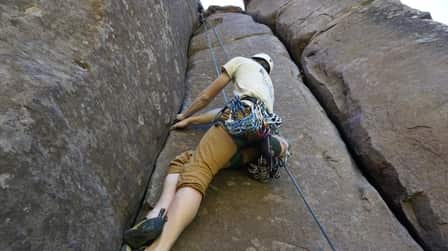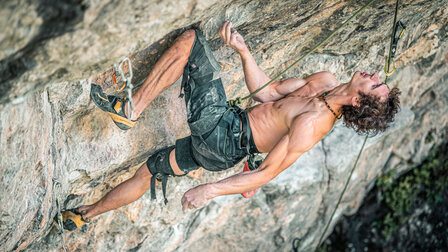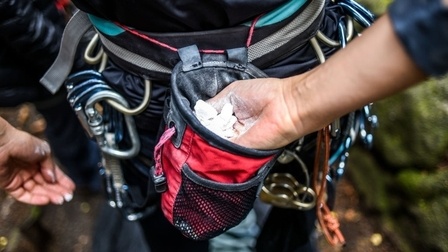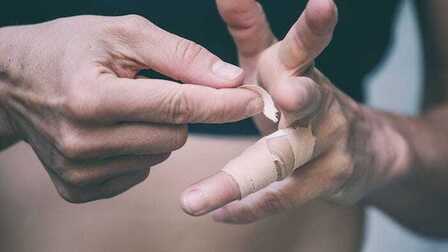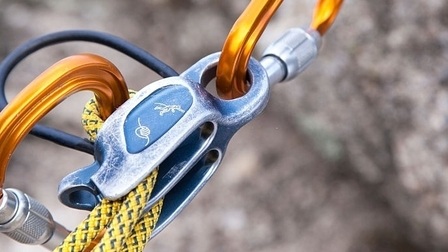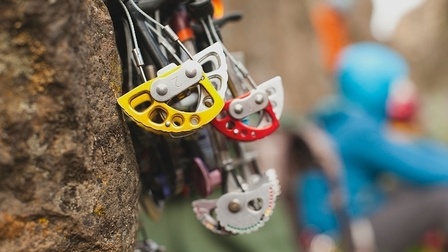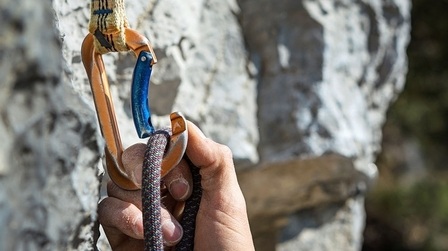Climbing is a great sport. Participating in mountain climbing brings you a lot of benefits, the best benefit is health. Climbing helps you stay healthy, relax after tiring days, and socialize with friends.
However, there are many reasons why we sometimes need to take a break from climbing for weeks, or months. The reason could be an injury, due to work being too busy, or you have to take exams, travel, be busy with family, ... You will feel bad when you quit climbing and come back to feeling weak, lack of coordination. It makes you depressed and demoralized.
You can return to your previous level and even get through it with enough dedication — and motivation.
Below, we provide some tips to keep climbing motivation after break, which we hope can be of great help to those involved in this extreme sport.
1. Learn to Accept - Accept where you are

You regularly participated in mountain climbing before. You worked hard, tried to learn to achieve your goal, you reached a certain level of climbing, but after a few months off, you lost your strength.
This is just the sport nature. Most importantly, don't get discouraged when you can't do the moves you did six months ago.
Just coming back to this subject after a while, you will definitely feel bored and want to give up. Instead, focus on what you can do and work from there. If you're already at a high level, start by trying to climb each V2 in your gym or local area, then work your way up to V3s.
Know yourself and realize that any limitations or fears you have are tolerable and temporary.
2. Set clear goals

No matter how long you have been out of climbing, it is important that you feel confident and always think and try to quickly return to your previous climbing rhythm, even if it is to achieve higher goals.
If your previous goal was 6.12 and now it's 5.12 and you find it difficult, set realistic goals for where you want to be in 3 months, 6 months, and a year. You need to make a training plan on how you will achieve those goals. You need to make a plan to achieve your goal in stages.
It is important for you to assess your muscular strength, technique, and mental endurance. Identify what you need to improve on and set goals that you can focus on while climbing.
3. Focus on progress

Of course the goal is important, but you also need to focus on the process. The specific process here is whatever progress you are making. For example climb a harder level, move more smoothly on rocks or progress further in your current level. Even if you don't return to your previous level, enjoy and strive to make the return process superior.
4. Join climbing with friends, with team
During the climb, you may encounter obstacles. You may feel sad when climbing the mountain alone. It's a lot more fun to go out with friends who love to climb than to fall into trouble alone. Climbing with a team helps you socialize, make more friends, and can make the process of getting back in shape easier. You may also be motivated to climb for longer periods of time.
Climbing with knowledgeable friends will help you a lot. During the climb, talk to your climbing companions about your fears and limitations, and they will help you feel comfortable when climbing again or when you want to continue. Some friends are good and subtle, they easily recognize your fears and difficulties, they will help you overcome it, instead of disappointing you and giving up.
5. Optimistic, smile at everything that happens

You will feel more comfortable and enjoy the process of overcoming obstacles, achieving goals (how we become better) more if you keep a positive attitude. You will also have much more fun climbing with friends.
You can climb as high as you feel comfortable. When you feel the fear of falling, climb down. It's time to start climbing again after a long time, maybe you will have that fear. However, personal experience and many other climbing accounts have proven that in the end, you will feel comfortable going a little higher and eventually you will be able to climb as high as before.
6. Start carefully

To start climbing more easily in a few sessions and get back to the point you planned for before your long vacation, the single most important thing you can do when you return to climbing after a long break is to make sure you warm up thoroughly to avoid muscle and tendon injuries.
Some climbers subjectively do not warm up before climbing, in fact warming up actually helps you perform better, this is an important point for the mental part to return to climbing after a long rest. . For example, warming up your muscles will help them carry heavier loads and also keep the blood flowing so you don't get stuck.
Additionally, warming up can help prevent injury to your tendons and muscles. This is an important aspect of getting back into rock climbing. Especially since your risk of injury may be higher when you first start climbing again than when your body has gotten used to the rigors of the activity.
If you're looking for a quick and easy warm-up, but still guaranteed, here are some suggestions for you.
- 2 minutes jump rope
- 2 minutes climbing
- Stretching movements for 4-6 minutes such as arm circles, high kicks, ... (Do not do static stretching. Remember to static stretching before exercise can make injury)
- 1 minute jump rope. Jump rope for another minute after you complete your stretch.
- Time
You definitely must not rush, everything to return to the original orbit takes time. In particular, for this climbing sport, if you rush, burn the stage, it can bring you consequences that you do not anticipate, the most obvious can be unnecessary injuries. This is a recipe for injury and even more time consuming.
Don't try to go right back to your old workout routine during your first week. While a focused exercise program will help you regain your strength quickly, it won't go back to the way it was overnight or in a week (or even two weeks).
7. Start at a light, easy level first
Your first day back climbing, start by acclimatizing from the low end, starting at the high level you were climbing when you left can leave you feeling weak and frustrated, so It is important that the first climbs are much lower than your previous grade level. Advice for you, you should start with a few climbs half your level. This not only gives the rhythm and technique of climbing, but also gives you more confidence in the climbing game.
To make this even more effective, climb up and downhill a few times in a row (usually 3 times) before moving on to another climb of the same level. Once you've done 3 reps for some problem/route, start working on one problem at a level higher than that level, then another one higher than that level until you've done it. Show the climb from the level that you did before the break.
You may have noticed that climbs that used to be easy have become harder and that's okay. The nice thing about getting back on the mountain bike is that the more you do it, the faster and easier it gets.
8. Eat more protein food after climbing

When climbers rest for a while, the body inevitably adjusts and doesn't absorb as much protein or nutrients as it did when you were active before. This will make it difficult when you start climbing again because your body won't have as many nutrients to help you continue and recover from the climb.
Therefore, it is especially important that you prepare good food after the first few climbs to replenish any nutrients that your body may be lacking. Once you're back on track, your body will go back to adjusting throughout the day and preparing for your climb.
However, there is no need to overeat here. Overeating after exercise can be worse than not eating after climbing. Because eating too much can cause your body to go into shock. Eat something simple during the first break and then add more food as needed afterward. The most popular dish after climbing is the protein smoothie because most protein shakes are full of nutrients that are easily absorbed by the body and are important for muscle recovery. It's also easy to prepare
Conclusion
Going back to climbing after a break requires effort from each person. Hopefully these tips to keep climbing motivation after break will help you.


